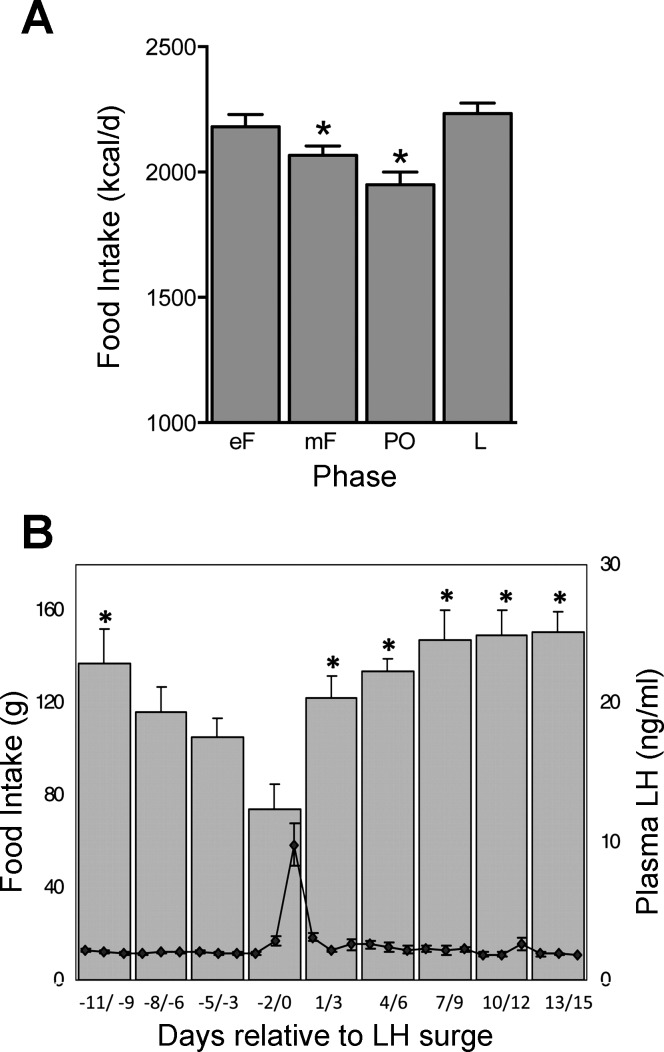Fig. 7.
Daily food intake during the ovarian cycle in women (A) and rhesus macaques (B). Note the progressive decreases in food intake during the follicular phase in both women and monkeys and the high, constant levels of food intake during most of the luteal phase in monkeys (women's data were averaged across the entire luteal phase). Women's data (kilocalories eaten per day; values are expressed as means ± SE) are calculated from three studies in which food intake was measured by weighing, and the cycle phase was monitored with urinary LH and reports of menses in a total of 34 women. In each study, data were averaged across the early-follicular (eF; 4 day), midfollicular (mF; ∼9 day), periovulatory (PO; 4 day), and luteal (L; ∼11 day) phases. *Significantly different from luteal phase. Adapted from Am. J. Clin. Nutr. (1993; 57: 43–46), American Society for Nutrition (229); Am. J. Clin. Nutr. (1989; 49: 252–258), American Society for Nutrition (278); and Am. J. Clin. Nutr. (1989; 49: 1164–1168), American Society for Nutrition (450). Monkey data are plasma LH concentrations (open circles, means ± SE) and daily food intakes (solid bars, means ± SE) averaged across consecutive 3-day intervals relative to the LH peak (day 0) in 7 monkeys. *Significantly different from day −2/0. Reprinted with permission from Human Reproduction Update, Brain imaging studies of appetite in the context of obesity and the menstrual cycle, Dean A. Van Vugt, 16: 276–292, 2010 (756).

